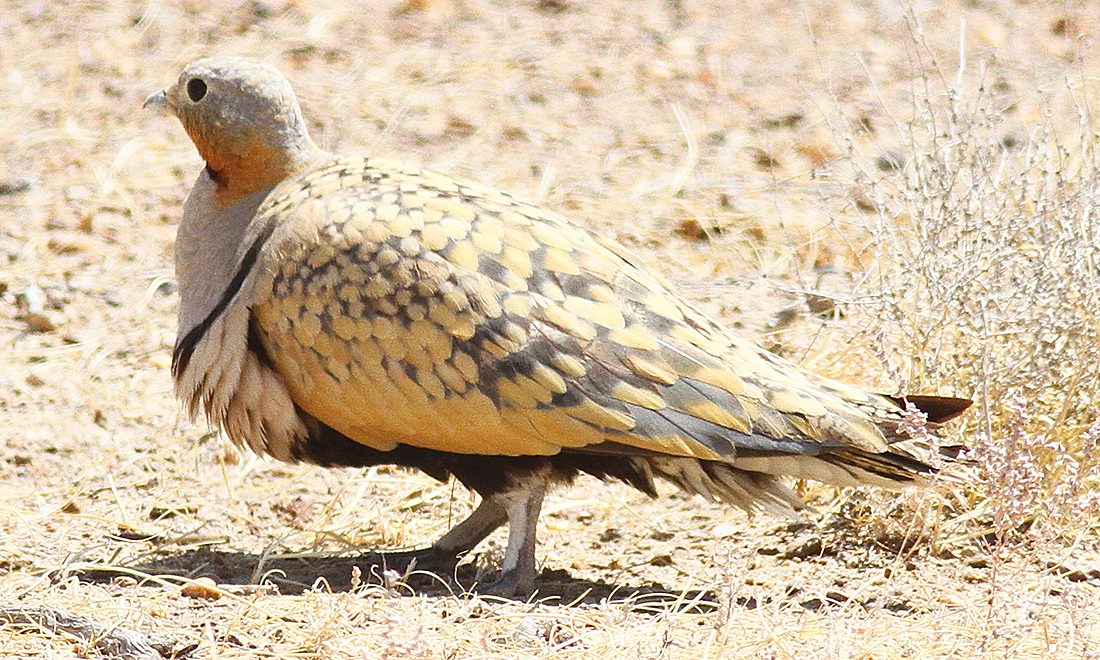
Black-bellied Sandgrouse Pterocles orientalis ranges from Iberia to China, with arenarius a rare breeder in Tianshan and Altai in northern Xinjiang. HABITAT & BEHAVIOR In steppe and semi-desert uplands, usually in pairs or small flocks. May fly long distances to water holes, most frequently in morning. ID & COMPARISON Readily distinguishable from Tibetan Sandgrouse Syrrhaptes tibetanus and Pallas’s Sandgrouse S. paradoxus by large black belly patch (more extensive than in Pallas’s), thin, well-defined black-and-white pectoral band (present in both sexes, unlike in Pallas’s), wedge-shaped rather than elongated central tail feathers, and unfeathered feet. Has strongly contrasting black and white underwing, unlike nearly all-buff underwing of Pallas’s and nearly all-black underwing of Tibetan. Black-bellied is also more robust and has broader wings than Pallas’s. Male has grey head, neck, and breast with broad orange and black throat patch extending into a half collar; broad buff band between pectoral band and black belly; undertail coverts grey; white-tipped tail black from below, from above almost hidden by golden-buff uppertail coverts with black bars. Upperparts mainly greyish-brown, richly covered by golden-rufous spots, in flight black primaries and secondaries contrast markedly with golden-rufous coverts. Female has yellow throat patch, bordered by black line below; otherwise mainly golden-buff above pectoral band and on upperparts, heavily spotted/barred above, spotted/streaked on breast; greater coverts golden-rufous as in male; undertail coverts buff. BARE PARTS Bill, feet grey; orbital ring whitish in male, buff in female. VOICE Musical clucks and distinctive bubbling notes, usually uttered in flight. — Craig Brelsford
THE SANDGROUSE OF CHINA
shanghaibirding.com covers all three members of the family Pteroclidae in China. Click any link:
Tibetan Sandgrouse Syrrhaptes tibetanus
Pallas’s Sandgrouse S. paradoxus
Black-bellied Sandgrouse Pterocles orientalis
ACKNOWLEDGEMENTS
Daniel Bengtsson served as chief ornithological consultant for Craig Brelsford’s Photographic Field Guide to the Birds of China, from which this species description is drawn.
